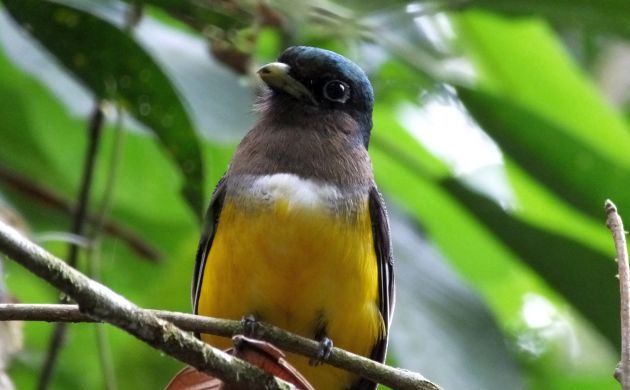
Some birds are so familiar, even non-birders can’t help but know what they are, or at least what family they belong to. In upstate New York, sparrows, doves, woodpeckers, and cardinals fall into this category and are probably why we see more of those backyard birds (and their semi-psychedelic stylized versions) on Christmas cards, napkins, and other random types of stationary. That’s OK, we love all sorts of birds, I even love imaginary ones, and the ones that come to the backyard are also ideal starter species.
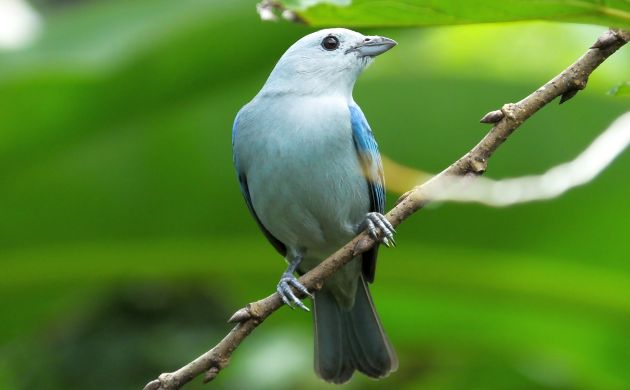
In Costa Rica, the Blue-gray Tanager is an ideal species for opening the door to everything birds.
But, as many of us know, with 10,000 species of birds to choose from, a heck of a lot are not even close to being familiar. Go birding for the first time in the Dominican Republic and you might wonder if a Broad-billed Tody is a flycatcher, a really lazy hummingbird, or if some super cute stuffed animal came to life. It only takes a few looks at some of the jays in Mexico to know that Kansas is definitely on the far side of some distant rainbow, and if we go birding in the Amazon, Borneo, or New Guinea, you might wonder if you are still on the same bird planet.
One of those unfamiliar birds high on the must see list of North American birders (in large part because it’s so unfamiliar) is the Elegant Trogon. The only regularly occurring member of its esteemed family within the ABA boundaries, this cool bird exhibits the same sort of iridescence and striking looks that challenge us to stop gazing at any of the Trogonidae. They just look too damn amazing to ever be familiar, even if you live in places where trogon species are par for the birding course. With a big fat ten species on the trogon list, Costa Rica is one of those choice places. While the most famous member of the family is one of Costa Rica’s star birds, in this post, I’m only going to talk about the two smallest trogons on the list. Both are common, both are of course beautiful, and since they like to just sit there and be admired, in keeping with trogon fashion, both the Gartered Trogon and the Black-throated Trogon are also made for the camera.
Gartered Trogon
The bird formerly known by the much more delicious name of “Violaceous Trogon” got turned into a “Gartered Trogon” after a three way split that also resulted in the Guianan and Amazonian Trogons (you can probably guess where they live). This beautiful, robin-sized bird is probably our most common trogon and likes to hang out at the edge of rainforest, in gardens with tall trees, and in riparian zones. Despite the purple, blue, green, and yellow plumage dazzle, it’s not shy about perching on power lines and other spots right out in the open. Watch for it at any number of lowland and foothill sites.
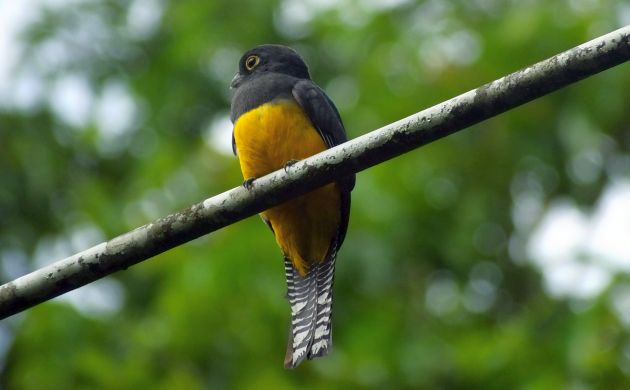
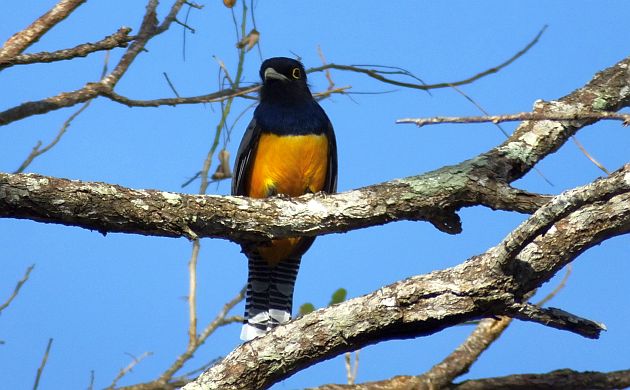
At many sites, its fairly rapid whistled barking song is also a common aspect of the dawn soundscape.
The female isn’t as colorful as the male but she still looks cool in her own right (she is a trogon after all). Separate her from the similar female Black-headed Trogon by her broken eye ring.
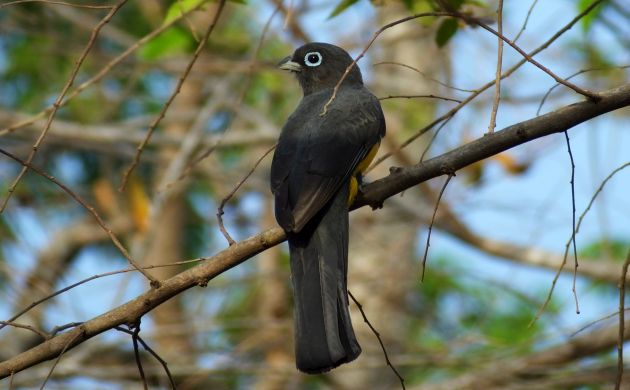
Not a Gartered Trogon
Black-throated Trogon
Sharing much of the same range in Costa Rica as the Gartered Trogon, this beautiful, little shining bird replaces the Gartered in the understory of humid forest. It doesn’t like to come to the edge, nor leave the shade of the forest, but is still common in most suitable sites. Although the Black-throated is too dignified to perch on roadside wires, it is nevertheless camera friendly and happy to sit for long periods of time at fairly close range. To see this beauty, go for a walk on a forest trail at Carara National Park, Lands in Love, La Selva, or any other place with lowland or foothill rainforest.
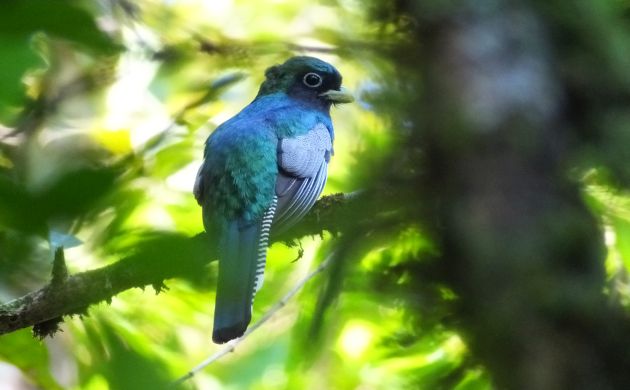
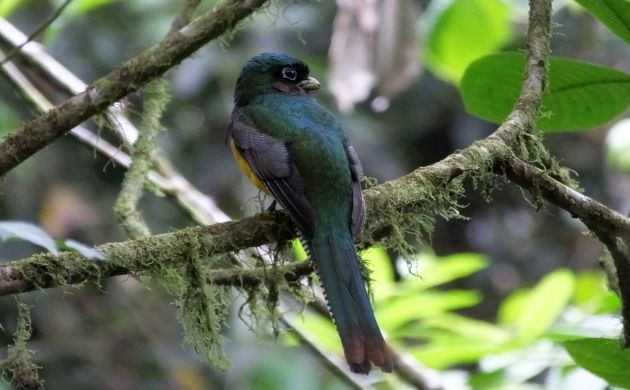
How this species is often seen inside the forest.
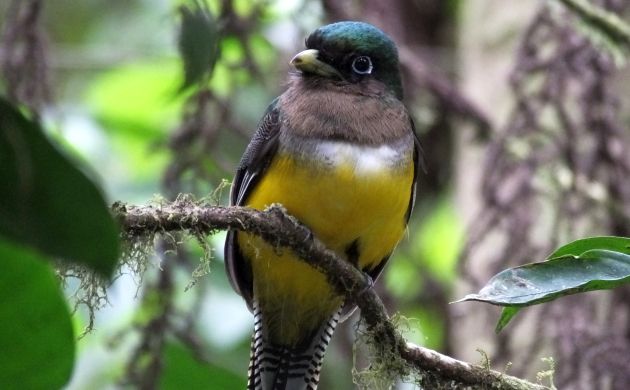
I love juvenile birds, they are so naive and friendly. You worry about them though and just want to tell them, “Be careful now, don’t go and get eaten!”
The female makes up for the shiny green colors of the male with a warm and welcome combination of rainforest brown and lemon yellow underparts. Although the muting shade of the forest can make this species look a bit like the Gartered, the brown of the female and the blue-gray eye ring of the male are diagnostic field marks.
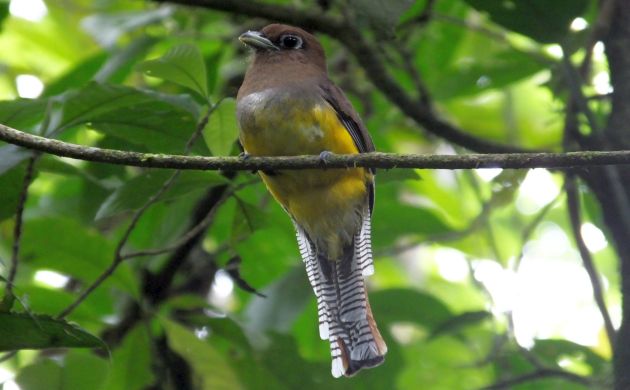
One usually realizes that a Black-throated is sitting somewhere nearby upon hearing its song of two short, whistled notes.
Watch for this pair of avian beauties at many of the lowland and foothill forest sites in Costa Rica. While looking at these locally familiar birds, you will probably see toucans, motmots, Crimson-collared Tanagers, and some of our other exotic yet familiar bird species. I hope to see them with you.
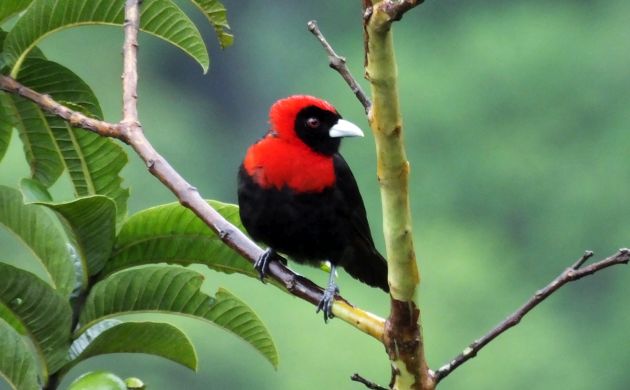
Yep, actually quite familiar.





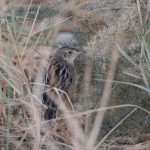
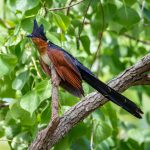



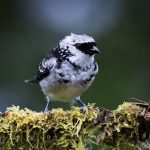
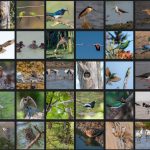
Leave a Comment